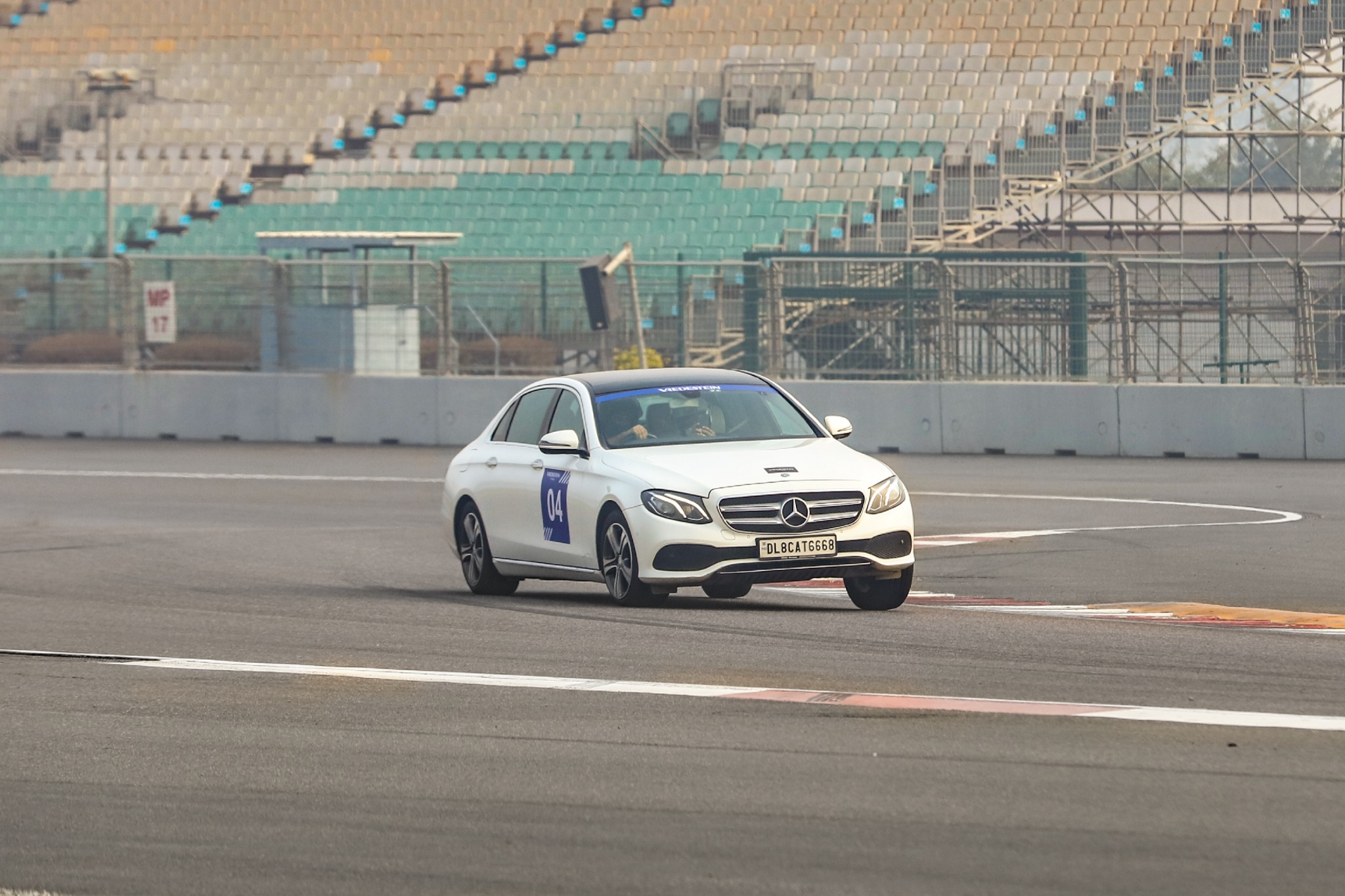Vredestein Ultrac Vorti tyre review — is this the new benchmark of luxury performance?
We tried out the Vredestein Ultrac Vorti around a few hot laps at Buddh International Circuit to tell you all about their performance!
 A two-tonne long-wheelbase luxury car on a racetrack? Should be an interesting experience on the Vredestein Ultrac Vorti tyres
A two-tonne long-wheelbase luxury car on a racetrack? Should be an interesting experience on the Vredestein Ultrac Vorti tyresIf you’ve recently been hunting for the right pair of shoes for your premium sedan, you must have realised how India’s restrictions on the import of tyres has impacted their availability. Dominant premium brands have had their business affected and the supply chain has taken a hit, creating a white space for an Indian manufacturer to fill in. Apollo Tyres have now plugged the gap with their European brand Vredestein that they acquired almost a decade ago. Given the rise in the luxury and performance car markets in recent years and the regulatory tailwind from restrictions on imports, the company now feels confident to play their cards - and it’s a full deck!
 The compound of these Vredestein Ultrac Vorti tyres isn't as soft as most other international tyres
The compound of these Vredestein Ultrac Vorti tyres isn't as soft as most other international tyresVredestein tyres will cater to the premium and luxury passenger car and SUV segment and we were invited to test their Ultrac Vorti range at India’s premier racing arena — the Buddh International Circuit. One could argue that the BIC’s perfect tracmac isn’t the most ideal place to simulate the harshness of the Indian road conditions, but then again a closed environment like this can demonstrate the limit to which a tyre can be pushed. In terms of the speed, grip, heat dissipation and tyre wear, all within 30 minutes of hard abuse.
Initially I shied away from the Mercedes-Benz E200 that was allocated for my test — who enjoys hauling a two-tonne long-wheelbase luxury car around a track? But I was quick to realise that the exact reasons for which I’d not pick the Merc are the ones that would prove the tyres worth. Today was all about the tyres, not the car, I reminded myself. Can the rubber really make this an entertaining experience? Soon, it was time to find out.
 This wasn't about the car, but more about the tyres
This wasn't about the car, but more about the tyresWe were instructed to behave, which did limit the extremities that I could push the tyres to, but still, the Mercedes-Benz E200 was given plenty of shove. Our test car came equipped with the Ultrac Vorti 225/50 ZR 17 steel radial tyres that are constructed with new-age compounds in the body ply and rim cushioning. This was evident as the Merc started to roll; there was very little rolling resistance and tyre noise. As we gathered speed, the tyre noise remained to a minimum, so much so that I had to ensure (more than once) that all my blower controls were switched off, to make the cabin as quiet as possible.
Two laps would have sufficiently heated the tyres and having established that they could keep the car comfortably planted, it was then time to unsettle the Merc and test the traction on offer. The feedback from the tyres felt adequate and they were able to control the Merc’s tendency to understeer due to its weight. Edge grip felt great too as the Merc was able to handle confidently through the parabola, and was able to quickly change directions right after. The performance only got better with each passing lap, our car was able to stick to the racing line with more poise and confidence and within the limits of what one would push a car like the E-Class, not once did the tyres feel like they were going to let go.
 Once the tyres got heated up, the feedback improved and our car was able to stick to its line better
Once the tyres got heated up, the feedback improved and our car was able to stick to its line betterIndia-specific stiffer shoulder and sidewall construction (denoted by an I on the tyre) provided the right kind of stability, and helped me trust the tyre over the car's dynamic potential. It is also claimed to boost the braking performance, as the contours and large bead area minimised any sort of deformation under severe load, all to provide responsive steering precision even at such high speed.
These tyres are optimised for longevity and it shows — the compound isn’t as soft as international brands which is exactly what typical Indian customers would be after. It was all the more evident after I pulled over to inspect the tyres in the pit lane — despite 30 minutes of screaming and screeching there weren't too many signs of shred or wear, the tread seemed as fresh as it was before I left. These are attributes that would prove to be a big draw for customers looking for longevity and better value in the long run.
In addition to their road-performance, Vredestein is also extremely proud of their tyre design that’s been done with Italdesign. Their tread pattern is functional yet attractive, with the groves and cuts beautifully embedded in the rubber.
 We sure had some exotics with us for company!
We sure had some exotics with us for company!Prices are sure to be competitive as these tyres will be manufactured at Apollo’s facilities around India. Vredestein says they’re positioned at around 15-20 percent lower than the equivalent Italian and French rubber, and will be made available across 50 of Apollo’s retail partners across the country. The company will also be offering a direct-to-home delivery option, where customers will be presented with some cool-looking tyre boxes. We’ve also experienced the Vredestein Centauro range of motorcycle tyres, you can read more about them by clicking here.


